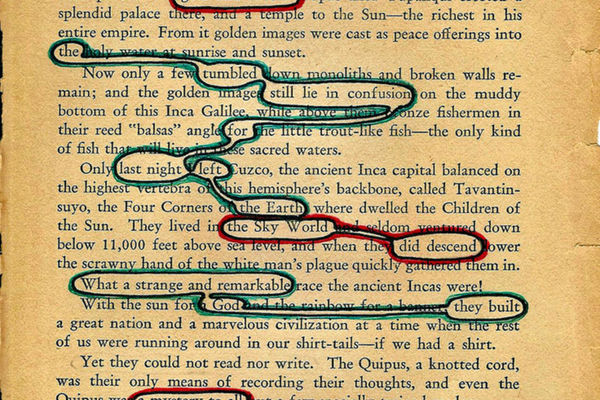Make found poetry
Collect words and phrases from magazines, newspapers, and labels to arrange into found poetry on paper, exploring rhythm, meaning, and creative reuse.



Step-by-step guide to make found poetry
Poetry for Kids | World music | STEM Home Learning
Step 1
Clear a flat workspace to work on.
Step 2
Spread magazines newspapers and labels out so you can see lots of words and pictures.
Step 3
Ask an adult for help with scissors if you need help cutting.
Step 4
Flip through the pages to find words and short phrases that catch your eye.
Step 5
Cut or tear the chosen words and short phrases out of the pages.
Step 6
Sort your clippings into piles by mood or type such as happy sad action or describing.
Step 7
Pick one pile to start your poem with a strong or interesting word.
Step 8
Arrange the clippings on your paper to make a first line without gluing.
Step 9
Rearrange the words and lines to try different rhythms and meanings until you like the poem.
Step 10
Glue each clipping down onto the paper one at a time to fix your poem.
Step 11
Add drawings or color around the poem to match its mood if you want.
Step 12
Write a title and your name on the paper.
Step 13
Share your finished found poem on DIY.org.
Final steps
You're almost there! Complete all the steps, bring your creation to life, post it, and conquer the challenge!


Help!?
What can we use if we don't have magazines, newspapers, or labels to cut words from?
If you don't have magazines, use junk mail, cereal boxes, old schoolbooks, flyers, or printed pages from a computer as alternative papers to flip through and cut words and short phrases from.
My clippings keep moving or make the paper wrinkle when I glue them — how do we fix that?
Follow the instruction to arrange without gluing first, then use a glue stick or very small dots of white glue and press each clipping flat with a ruler or a heavy book to prevent shifting and wrinkling while the glue dries.
How can I adapt this found-poetry activity for different ages?
For younger kids have an adult pre-cut large, simple words and limit sorting to two mood piles, while older children can hunt for specific parts of speech, create more mood/type piles, and experiment with rearranging lines for rhythm before gluing.
What are some ways to extend or personalize our finished found poem?
After gluing the clippings and writing your title and name, personalize the poem by adding drawings or color around it, laminating or framing the page, making a series with other mood piles, or turning it into a blackout or digital collage to share on DIY.org.
Watch videos on how to make found poetry
Grade 9 Approach to UNSEEN POETRY
Facts about poetry and collage
✂️ Found poetry is made by rearranging existing words from other texts — you don’t have to invent new words to write a poem!
📰 Blackout poetry often uses newspaper pages where you black out unwanted words to reveal a hidden poem.
🎨 Collage artists combine scraps into new images — found poets do the same with phrases to craft fresh meanings.
🎲 The Dada art movement loved chance and randomness, ideas that inspired many modern found-poetry techniques.
📚 William S. Burroughs and others popularized the cut-up technique, slicing texts to create surprising new sentences.
How do you make found poetry with kids?
What materials do I need for found poetry?
What ages is found poetry suitable for?
What are the benefits of found poetry for children?


One subscription, many ways to play and learn.
Only $6.99 after trial. No credit card required



